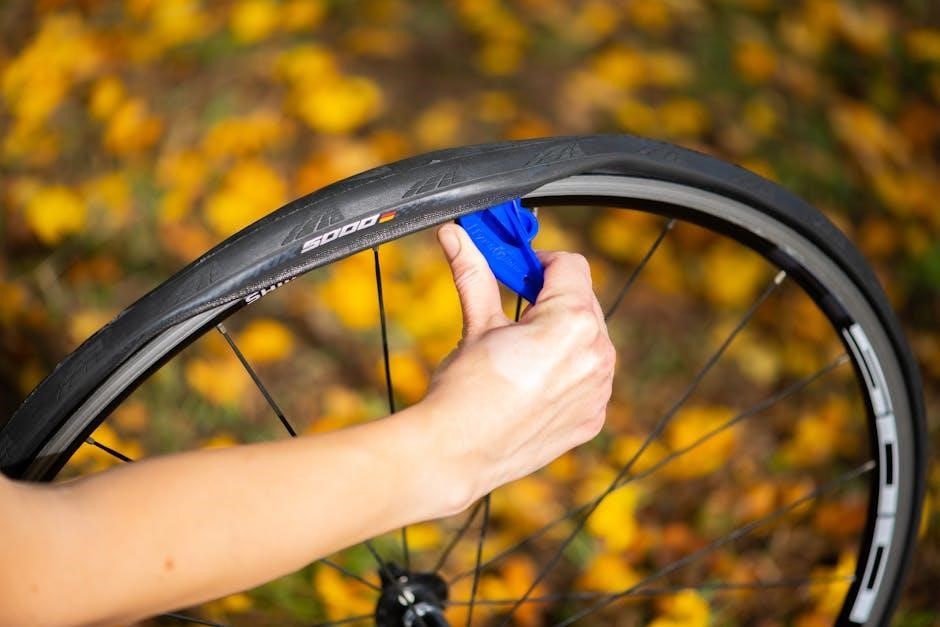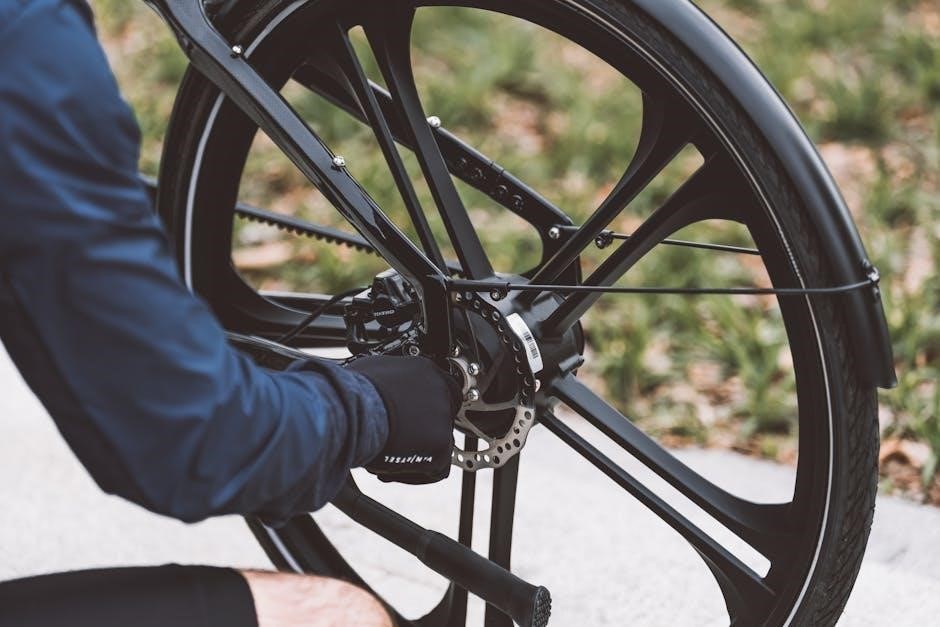Welcome to the ultimate guide for your new Sgsmf115 Waterway Pool Pump Specifications Manual‚ designed to ensure a smooth and efficient experience. This manual provides detailed information to help you understand and maintain your pool pump effectively‚ ensuring optimal performance and longevity.
1.1 Overview of the Sgsmf115 Waterway Pool Pump
The Sgsmf115 Waterway Pool Pump is a high-performance‚ energy-efficient solution designed for residential and commercial pool systems. Built with durable materials‚ it ensures reliable operation and long-lasting performance. This pump is engineered to handle various pool sizes and types‚ offering consistent water circulation and filtration. Its compact design and user-friendly controls make it an ideal choice for pool owners seeking a dependable and efficient pumping system.
1.2 Importance of the Specifications Manual
The specifications manual is essential for understanding the Sgsmf115 Waterway Pool Pump’s capabilities‚ installation requirements‚ and maintenance needs. It provides detailed technical information to ensure safe and efficient operation. By following the manual‚ users can optimize performance‚ prevent potential issues‚ and extend the pump’s lifespan. This guide is a critical resource for both new and experienced users‚ offering clear instructions and recommendations for troubleshooting and upkeep.
Key Specifications of the Sgsmf115 Waterway Pool Pump
The Sgsmf115 Waterway Pool Pump features robust horsepower‚ optimal voltage requirements‚ and high-efficiency performance ratings. It delivers exceptional flow rates and pressure‚ ensuring reliable operation for various pool sizes and types.
2.1 Horsepower and Voltage Requirements
The Sgsmf115 Waterway Pool Pump operates with a powerful 1 to 2.5 horsepower motor‚ designed for efficient performance. It requires a 230V or 115V electrical supply‚ ensuring compatibility with standard residential power systems. The pump’s voltage and horsepower configuration supports energy-efficient operation while maintaining robust water circulation. Proper voltage selection is crucial for optimal performance and safety‚ ensuring it meets your pool’s specific demands without overloading the system.
2.2 Pump Speed and Performance Ratings
The Sgsmf115 Waterway Pool Pump features a dual-speed or variable-speed design‚ offering enhanced energy efficiency. With a standard operating range of 1725 RPM for high speed and 850 RPM for low speed‚ it ensures optimal water circulation. Performance ratings highlight its ability to handle heavy-duty pool operations while maintaining low noise levels‚ making it suitable for both residential and commercial applications. This balance of power and efficiency ensures reliable performance for various pool sizes and types.
2.4 Maximum Flow Rate and Pressure
The Sgsmf115 Waterway Pool Pump delivers a maximum flow rate of 100 gallons per minute (GPM) and operates at a maximum pressure of 50 pounds per square inch (PSI). These specifications ensure efficient water circulation and filtration‚ making it suitable for large pool systems. The pump’s high flow rate and pressure capabilities allow for effective cleaning and maintenance of pool water‚ ensuring optimal performance and longevity of the pool system.
Installation and Maintenance Guidelines
Proper installation and regular maintenance are crucial for optimal performance. Ensure all connections are secure‚ align components correctly‚ and follow the manual for routine checks and part replacements.
3.1 Step-by-Step Installation Process
Begin by unpacking and inspecting all components. Position the pump on a level surface near the pool. Connect the inlet and outlet pipes securely‚ ensuring proper alignment. Install the strainer basket and prime the pump. Connect the electrical supply‚ following the manual’s wiring diagram. Test the pump to ensure smooth operation. Refer to the manual for specific torque values and safety precautions during installation.
3.2 Recommended Maintenance Schedule
Regular maintenance ensures optimal performance and extends the pump’s lifespan. Clean the strainer basket weekly to prevent debris buildup. Inspect and replace worn seals every 6 months. Lubricate motor bearings annually or as specified. Check for leaks and tighten connections periodically. Balance pool chemicals to prevent corrosion. Schedule professional inspection every 2 years to identify potential issues early. Follow the manual for detailed maintenance procedures.
3.3 Troubleshooting Common Issues
Identify and resolve common issues promptly to maintain efficiency. Low water flow may indicate a clogged strainer or impeller; Noise could signal worn bearings or misalignment. Leaks often stem from loose connections or damaged seals. If the pump fails to start‚ check the power supply and circuit breaker. Refer to the manual for diagnostic steps and solutions. Addressing issues early prevents further damage and ensures reliable operation.
Safety Precautions and Guidelines
Ensure electrical safety by avoiding water contact with live components. Use GFCI-protected outlets and follow installation guidelines. Regularly inspect equipment for damage to prevent accidents and ensure reliable operation.
4.1 Electrical Safety Measures
Ensure the pump is installed by a licensed electrician‚ using GFCI-protected circuits. Avoid exposing electrical components to water. Keep the area dry and avoid overloading circuits. Regularly inspect cords and connections for damage. Never operate the pump with damaged electrical parts. Follow all local electrical codes and manufacturer guidelines to prevent shocks or hazards. Proper grounding is essential for safe operation. Always disconnect power before servicing.
4.2 Operating Safety Tips
Always supervise the pump during operation‚ especially when children or pets are nearby. Ensure the pump is installed on a level‚ stable surface to prevent vibration and noise. Regularly check for leaks or blockages in the system to maintain efficiency and safety. Avoid overheating by ensuring proper airflow around the pump and motor. Never operate the pump without the strainer basket to prevent damage from debris. Follow the recommended operating hours and avoid continuous operation beyond specified limits. Keep the pump and surrounding area clean to prevent tripping hazards or electrical issues. Store chemicals and cleaning supplies away from the pump to avoid accidental exposure.
4.3 Emergency Shutdown Procedures
In case of an emergency‚ immediately switch off the power supply at the circuit breaker. Stop the pump operation and isolate it from the pool system. Check for any visible damage or leaks before restarting. Ensure all safety precautions are followed to prevent accidents or further damage. Regularly inspect the system to identify potential issues early. Always refer to the manual for specific shutdown instructions tailored to your Sgsmf115 Waterway Pool Pump model.
Operational Parameters and Limits
The Sgsmf115 Waterway Pool Pump operates within specific temperature‚ pH‚ and noise limits to ensure optimal performance and longevity. Adhere to these parameters for safe and efficient operation.
5.1 Maximum and Minimum Operating Temperatures
The Sgsmf115 Waterway Pool Pump is designed to operate efficiently within a temperature range of 32°F to 104°F (0°C to 40°C). Ensure the pump is not exposed to extreme temperatures‚ as this may affect performance or cause damage. The durable thermoplastic construction withstands typical environmental conditions‚ but prolonged exposure to temperatures outside this range can lead to reduced efficiency or potential motor damage. Always follow recommended guidelines for optimal operation.
5.2 pH and Chemical Compatibility
The Sgsmf115 Waterway Pool Pump is designed to operate in swimming pool environments with a pH range of 7.2 to 7.8. The pump’s thermoplastic components are resistant to corrosion from common pool chemicals‚ such as chlorine and bromine. However‚ exposure to extreme pH levels or incompatible chemicals like acids or abrasive cleaners can damage the pump. Regularly clean and maintain proper chemical balance to ensure longevity and optimal performance of the pump.
5.3 Noise Level and Vibration Control
The Sgsmf115 Waterway Pool Pump operates at a low noise level‚ typically around 60 decibels‚ making it suitable for residential use. Its robust design minimizes vibrations‚ ensuring smooth operation. Proper installation on a level surface and regular maintenance‚ such as balancing the impeller and checking for debris‚ help maintain quiet performance. Using vibration-dampening mounts can further reduce noise and prevent wear on connected components.
Energy Efficiency and Cost Savings
The Sgsmf115 Waterway Pool Pump features an energy-efficient design‚ reducing power consumption while maintaining high performance. Its advanced motor technology lowers operational costs and environmental impact significantly.
6.1 Energy Consumption Analysis
The Sgsmf115 Waterway Pool Pump is designed with energy efficiency in mind‚ featuring low power consumption while delivering high performance. Its advanced motor technology ensures minimal energy waste‚ reducing operational costs. By optimizing energy use‚ this pump not only saves money but also minimizes its environmental impact‚ making it a sustainable choice for pool owners. Regular maintenance further enhances its energy-saving capabilities‚ ensuring long-term efficiency.
6.2 Cost-Saving Features
The Sgsmf115 Waterway Pool Pump offers several cost-saving features‚ including an energy-efficient design that reduces power consumption. Its durable construction minimizes maintenance and replacement costs over time; Additionally‚ the pump’s variable speed settings allow for optimized performance‚ lowering operational expenses. These features collectively contribute to long-term financial savings‚ making it a cost-effective solution for pool owners seeking reliability and efficiency without compromising on performance.
6.3 Environmental Impact
The Sgsmf115 Waterway Pool Pump is designed with environmental considerations in mind. Its energy-efficient motor reduces carbon emissions and lowers energy consumption. By optimizing performance‚ it minimizes the environmental footprint. Proper maintenance ensures longevity‚ reducing the need for frequent replacements and potential chemical runoff. This makes it an eco-friendly choice for pool owners seeking to balance efficiency and environmental responsibility.
Compatibility with Pool Systems
The Sgsmf115 Waterway Pool Pump is designed to integrate seamlessly with various pool systems‚ ensuring compatibility with different pool sizes‚ types‚ and filtration setups for optimal performance.
7.1 Compatible Pool Sizes and Types
The Sgsmf115 Waterway Pool Pump is compatible with a wide range of pool sizes and types‚ including inground‚ above-ground‚ and vinyl-lined pools. Its versatile design ensures efficient operation across various pool configurations‚ making it suitable for both residential and commercial settings. The pump’s performance is optimized for pools of different capacities‚ ensuring reliable circulation and filtration. Always consult the specifications manual for exact compatibility details to ensure proper installation and operation.
7.2 Integration with Filtration Systems
The Sgsmf115 Waterway Pool Pump is designed to seamlessly integrate with various filtration systems‚ ensuring optimal water circulation and clarity. Compatible with sand‚ cartridge‚ and DE filters‚ it maintains consistent flow rates and pressure‚ enhancing filtration efficiency. Proper integration ensures balanced system performance‚ preventing overloading and maintaining water quality. Always follow the manual’s guidelines for specific filtration system compatibility to achieve the best results and prolong equipment lifespan.
7.3 Compatibility with Automation Systems
The Sgsmf115 Waterway Pool Pump is compatible with modern automation systems‚ allowing for seamless integration with smart pool controllers. This compatibility enables remote operation‚ scheduling‚ and real-time monitoring‚ enhancing convenience and efficiency. The pump’s advanced design ensures smooth communication with automation systems‚ optimizing performance and energy use. Compatibility with popular automation protocols ensures easy setup and reliable operation‚ making it a versatile choice for smart pool setups.
Warranty and Customer Support
The Sgsmf115 Waterway Pool Pump comes with a comprehensive warranty covering parts and labor for a specified period. Dedicated customer support‚ including online resources and a helpdesk‚ ensures assistance whenever needed.
8.1 Warranty Coverage and Duration
The Sgsmf115 Waterway Pool Pump is backed by a comprehensive warranty that covers parts and labor for a specified period. The warranty duration typically ranges from 1 to 5 years‚ depending on the component and usage conditions. Proper registration and adherence to maintenance guidelines are required to ensure full coverage. This warranty provides peace of mind‚ protecting your investment against defects and ensuring reliable performance over time.
8.2 Customer Service Contact Information
For inquiries or assistance‚ contact Waterway’s customer service at 1-800-POOL-PUMP or via email at support@waterwaypumps.com. Visit their official website at www.waterwaypumps.com for additional resources and support options. Representatives are available to address questions‚ provide troubleshooting guidance‚ and assist with warranty claims‚ ensuring a prompt and effective resolution to your concerns.
8.3 Online Resources and Manuals
Access comprehensive online resources and downloadable manuals for the Sgsmf115 Waterway Pool Pump on the official Waterway Pumps website. Find detailed installation guides‚ troubleshooting tips‚ and maintenance schedules in PDF format. The website also offers interactive tutorials and FAQs to help users optimize pump performance. Visit www.waterwaypumps.com/support for easy navigation and comprehensive support materials tailored to your pool pump needs.
Accessories and Replacement Parts
Explore a range of accessories and replacement parts for the Sgsmf115 Waterway Pool Pump‚ including seals‚ O-rings‚ and hoses‚ available on the official Waterway Pumps website.
9;1 Recommended Accessories
For optimal performance‚ consider essential accessories like a pressure gauge‚ filter basket‚ and replacement seals. A high-quality pool hose and winterization kit are also recommended. Additionally‚ a chemical feeder and pool test kit can enhance maintenance efficiency. These accessories ensure longevity and peak functionality of your Sgsmf115 Waterway Pool Pump‚ available through authorized dealers or the official Waterway Pumps website.
9.2 Replacement Parts Availability
Replacement parts for the Sgsmf115 Waterway Pool Pump are widely available through authorized dealers and online retailers. Common parts include seals‚ gaskets‚ and impellers. Ensure to purchase genuine Waterway components to maintain warranty coverage and performance. Visit the official Waterway Pumps website or contact their customer support for a comprehensive list of compatible parts and suppliers. Always verify part numbers in your manual for accuracy.
9.3 Upgrades and Enhancements
Upgrading your Sgsmf115 Waterway Pool Pump can enhance performance and efficiency. Consider installing an energy-efficient motor or integrating a variable speed drive for better control. Additionally‚ upgrading to a smart control system allows remote monitoring and optimization. Always consult the manual or contact Waterway customer support to ensure compatibility and avoid voiding the warranty. Genuine upgrade kits are available through authorized dealers or the Waterway Pumps website.
Comparison with Other Pool Pumps
The Sgsmf115 Waterway Pool Pump stands out for its energy efficiency and reliable performance‚ making it a top choice for pool owners seeking durability and cost-effective operation.
10.1 Performance Comparison
The Sgsmf115 Waterway Pool Pump excels in efficiency and reliability‚ outperforming many competitors with its robust design and consistent flow rates. Its high-performance motor ensures superior water circulation‚ making it ideal for large pools. Compared to other models‚ it offers lower noise levels and longer lifespan‚ making it a top choice for homeowners seeking a durable and energy-saving solution for their pool systems.
10.2 Cost Comparison
The Sgsmf115 Waterway Pool Pump offers a competitive price point compared to similar models‚ providing excellent value for its performance and durability. While initial costs may vary‚ its energy-efficient design leads to long-term savings. When compared to other high-end pool pumps‚ it balances affordability with quality‚ making it a cost-effective choice for homeowners seeking a reliable and efficient pool pump without compromising on features or performance.
10.3 Feature Comparison
The Sgsmf115 Waterway Pool Pump stands out with its energy-efficient design‚ durable construction‚ and user-friendly interface. Compared to other models‚ it offers advanced features like variable speed settings and a robust filtration system. Its compact design and quiet operation make it a superior choice. While other pumps may lack in noise reduction or control options‚ the Sgsmf115 excels‚ providing a balanced blend of performance‚ reliability‚ and innovative features for optimal pool maintenance.
The Sgsmf115 Waterway Pool Pump is a reliable and efficient choice for pool maintenance. This manual provides essential guidance for optimal performance and longevity‚ ensuring a hassle-free experience.
11.1 Final Thoughts on the Sgsmf115 Waterway Pool Pump
The Sgsmf115 Waterway Pool Pump is a high-performance‚ energy-efficient solution designed to meet modern pool maintenance needs. Its robust design‚ combined with user-friendly features‚ ensures reliable operation and longevity. By following the specifications manual‚ users can optimize performance‚ reduce energy costs‚ and enjoy a hassle-free pool experience. This pump is an excellent choice for homeowners seeking durability and efficiency in their pool systems.
11.2 Recommendations for Potential Buyers
Potential buyers should consider the Sgsmf115 Waterway Pool Pump for its efficiency and durability. Ensure compatibility with your pool size and type before purchase. Consult the specifications manual to understand installation and maintenance requirements. Professional installation is recommended for optimal performance. This pump offers excellent value for its price‚ providing reliable service and energy savings over time‚ making it a wise investment for any pool owner.

























































































